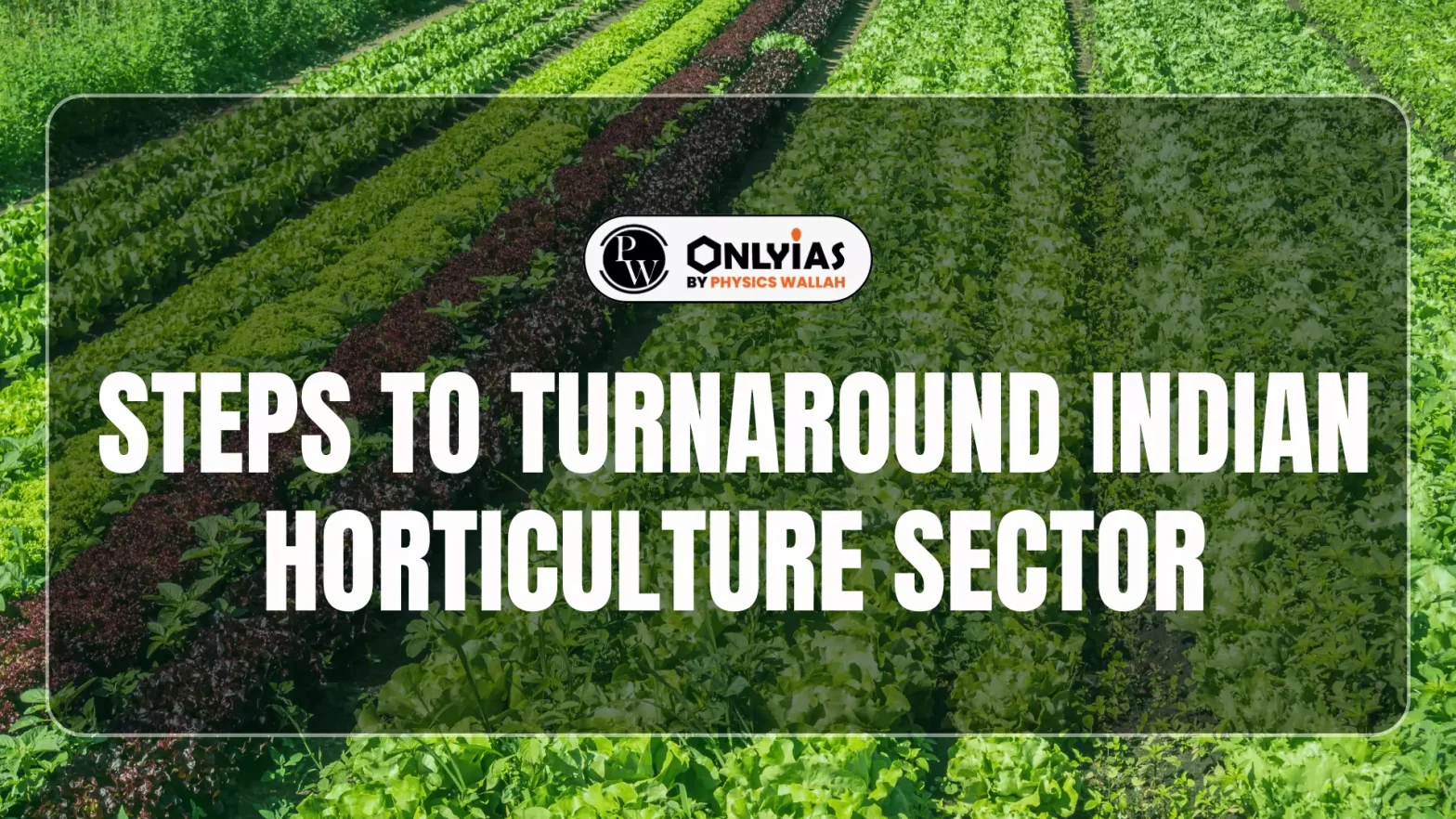India, while being the second largest producer of fruits and vegetables globally, accounts for a mere 2% of global horticulture trade.
| Relevancy for Prelims: Indian Horticulture Sector, Father of Horticulture, India’s Contribution, Achievements in Horticulture Sector, Challenges faced by the Horticulture Sector and Measures Required, etc.
Relevancy for Mains: Horticulture Sector in India- Significance, Challenges faced by the Horticulture Sector and Measures need to be taken, etc. |
About Horticulture and Potential of Indian Horticultural
- Refers: Horticulture can be defined as the branch of agriculture concerned with intensively cultured plants directly used by people for food, medicinal purposes, or aesthetic gratification.
- M. H. Marigowda is considered the father of horticulture in India.
- Branches of Horticulture:
- Pomology: It refers to the science of fruit crops such as the cultivation of Mango, Litchi, Citrus, etc.
- Olericulture: It refers to the science of vegetable crops such as the cultivation of Potato, onion, garlic, chilly, etc.
- Floriculture: It refers to the study of flower crops such as the cultivation of Rose, Jasmine, Carnation, Aster, etc.
- Important Producer: India is the second largest producer of fruits and vegetables globally after China.
- Importance for India: Given its agricultural potential and ideal climatic zones, India must boost horticultural production and improve access to nutritious food, harnessing the advantage that horticulture lends itself to our smallholder farming structure.
Enroll now for UPSC Online Classes
Suggested Measures for Improvement in Horticulture Sector
- Embrace the Full Strength of Farmer Producer Organisations (FPOs): FPOs can:
-
- Enable economies of scale
- Enhance operational efficiencies
- Promote best practices
- Connect farmers with (international) buyers
- Secure fair prices
- Minimize the impact of intermediaries
- Build farmers’ capacity to manage modern agriculture’s complexities
- Drive consistency in produce such as variety, size and level of maturity which is a prerequisite for successful processing and trade.
- Examples: Purandar Highlands, an FPO started by progressive smallholder farmers in Purandar, near Pune, is harnessing locally grown figs and has done well in both the domestic as well as international markets.
- FPO Sahyadri Farms has developed a comprehensive infrastructure (including an advisory team, pack-house, cold storage, and technology) to reduce costs and optimize resources.
- They mentor farmers in producing quality goods that meet global standards, and in establishing crop-specific value chains.
- Enhancement of Product Quality and Consistency: To meet international standards, India must improve the quality of products. Following measures need to be taken:
- Need to bridge the gap in extension services
- Need to ensure that farmers are equipped with the latest agronomic knowledge and sustainable farming techniques.
- Precision farming methods, integrated pest management, and responsible use of crop protection products can boost yields and maintain quality while minimizing environmental impact.
- Strengthening post-harvest infrastructure including storage facilities and processing units.
- It is essential for reducing wastage and enhancing the value and marketability of horticulture produce.
- It will also be beneficial to have trade agreements that reduce tariff- and non-tariff barriers that have impeded Indian exports.
- Robust Regulatory Frameworks and Technology: Compliance with international safety and quality standards is crucial for establishing a strong presence in foreign markets.
- Supporting and investing in agri-tech through grants or tax incentives will enable the adoption of precision agriculture technologies, IoT-based monitoring systems, water management and drones for crop management.
- This will improve productivity, efficiency, and resilience against climate and market variations.
- Integrated Logistics and Supply Chain Framework: Effective cold chains are vital for maintaining the safety and nutritional value of in-transit food products.
- Need to focus on pre-cooling facilities, refrigerated transport, and efficient packaging technologies.
- It will enable farmers to adjust the supply based on demand fluctuations.
- Government-led programmes such as the Gati Shakti mission, and the Dedicated Freight Corridor of Indian Railways should combine cold storage and transportation elements with real-time market data along with a provision to give farmers visibility into market demand, prices, and available logistics services.
- Public-Private Partnerships (PPPs): Affordable and customized insurance products can mitigate the risks associated with horticulture and encourage farmers to invest in quality improvement and compliance with export standards.
- The Cluster Development Programme (CDP) for horticulture is a good example of a PPP, wherein the government plays a facilitative role, and private enterprises leverage their operational excellence to create specialized clusters focused on horticultural crops with export potential.
Check Out UPSC NCERT Textbooks From PW Store
Conclusion
India truly has the potential to become a horticulture powerhouse. It can get there with robust, coordinated efforts and innovative strategies that enable equitable, sustainable growth for the sector and prioritize the prosperity of farmers.
![]() 6 Jul 2024
6 Jul 2024

